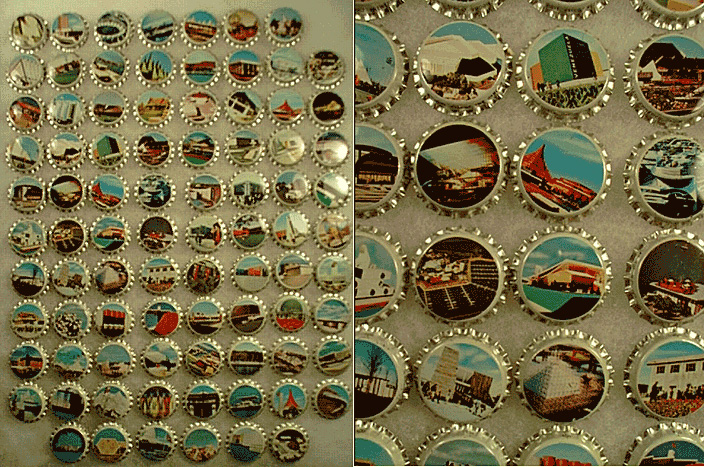
Expo 67 was an enormous undertaking for the City of Montreal.
Like the Olympics, World Exhibitions must be officially bid for by hopeful cities. Montreal obtained the 1967 exhibition at the last minute, when the initial winning city, Moscow, bowed out for fear of staggering costs.
 The Canada pavilion, with it's Katimavik, under construction.
The Canada pavilion, with it's Katimavik, under construction.Montreal was given the green light in November of 1962, less than 5 years to Expo's April of 1967 opening. Less than five years to install
847 buildings and pavilions,
27 bridges,
51 miles of road and walkways,
23 miles of sewers and drains,
100 miles of water, gas and power lines,
55,000 miles of phone wires and cables,
24,484 parking spaces,
14,950 trees,
4330 trash cans and
6150 light fixtures.
The odds were definitely against Expo 67 opening on time.
On top of that, the chosen site for Expo 67 didn't exist yet. The plan was to enlarge existing
Île Sainte Hélène to double its size and create
Île Notre Dame from rubble left over from the
metro excavations. During it's peak, Expo 67 was the world's largest construction site: dump trucks worked 24 hours a day, filling 28 million tons of rock into the
St. Lawrence river.
 28 million metric tons of rubble were needed for Expo 67.
28 million metric tons of rubble were needed for Expo 67.Amazingly, by the spring of 1967, only 2 pavilions were behind schedule. A labor force of some 6000 were hard at work on the magic islands just 6 months before Expo 67's opening.
 The U.S. pavilion under construction.
The U.S. pavilion under construction.On April 27, 1967, Expo 67 opened on time. It "rose out of the water like Botticelli's
Venus," as
Yves Jasmin so aptly put it, to welcome the world.
images: (1-3) library and archives Canada(4) westland.net/expo67
 For Expo 67, the now-defunct Dow Breweries had issued thematic bottle caps on their products. These caps featured photographs of various pavilions and attractions, and each was identified on the side of the cap. Dow Breweries issued a total of 85 different bottle caps.
For Expo 67, the now-defunct Dow Breweries had issued thematic bottle caps on their products. These caps featured photographs of various pavilions and attractions, and each was identified on the side of the cap. Dow Breweries issued a total of 85 different bottle caps. images: (top) personal collection
images: (top) personal collection




































